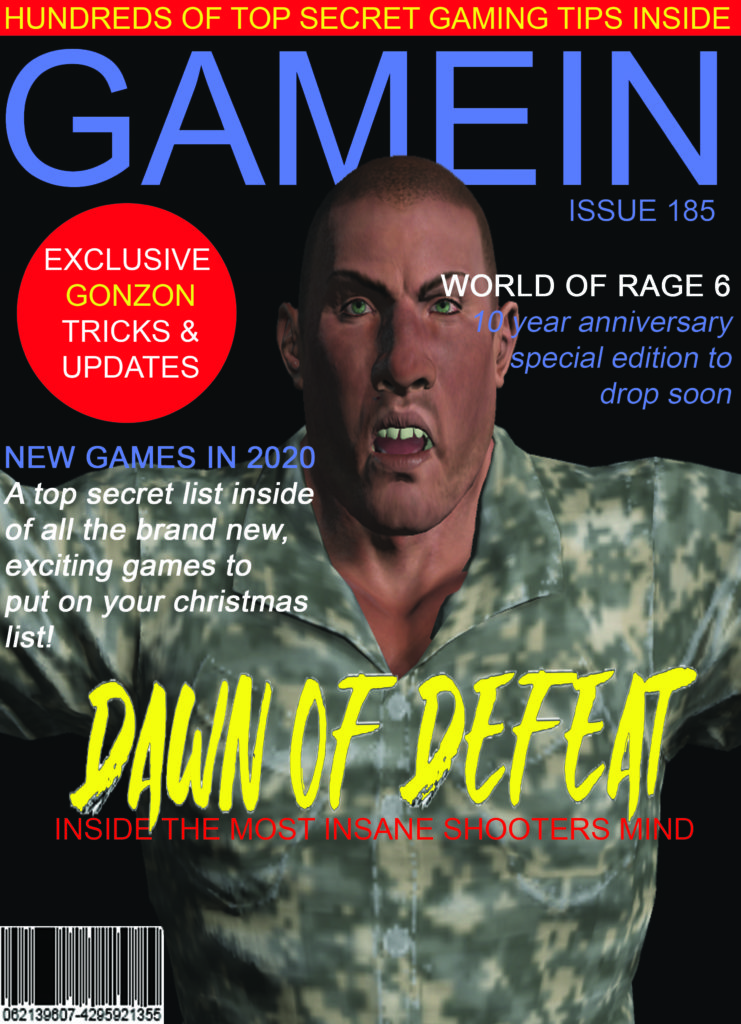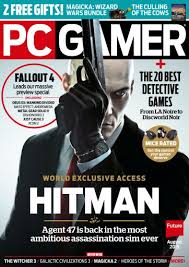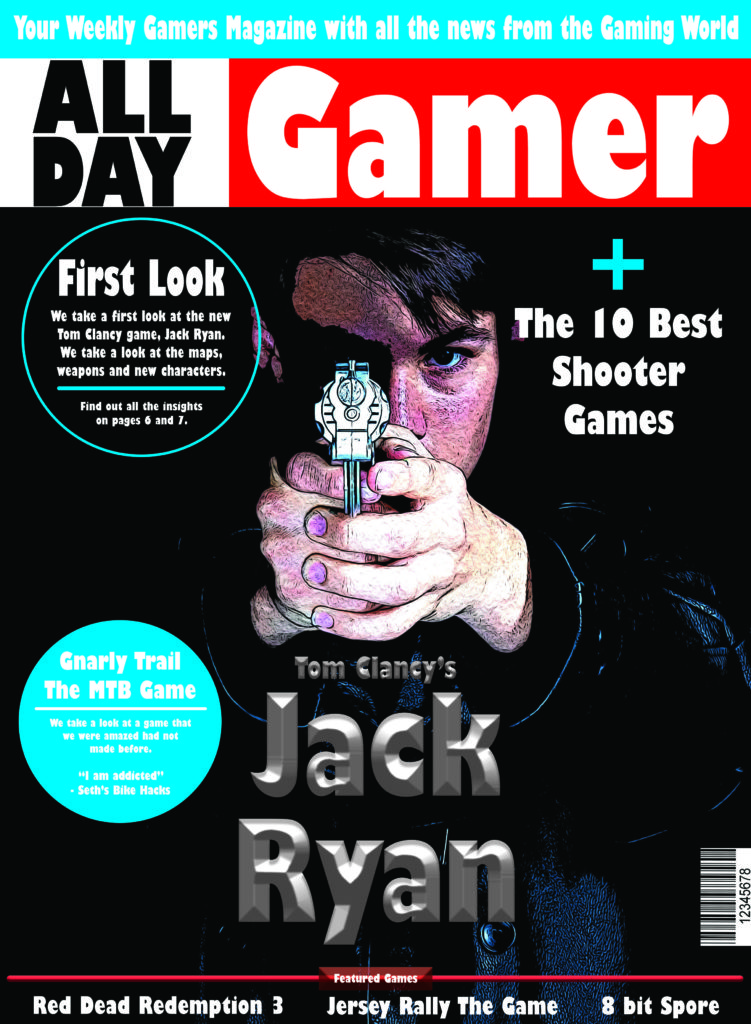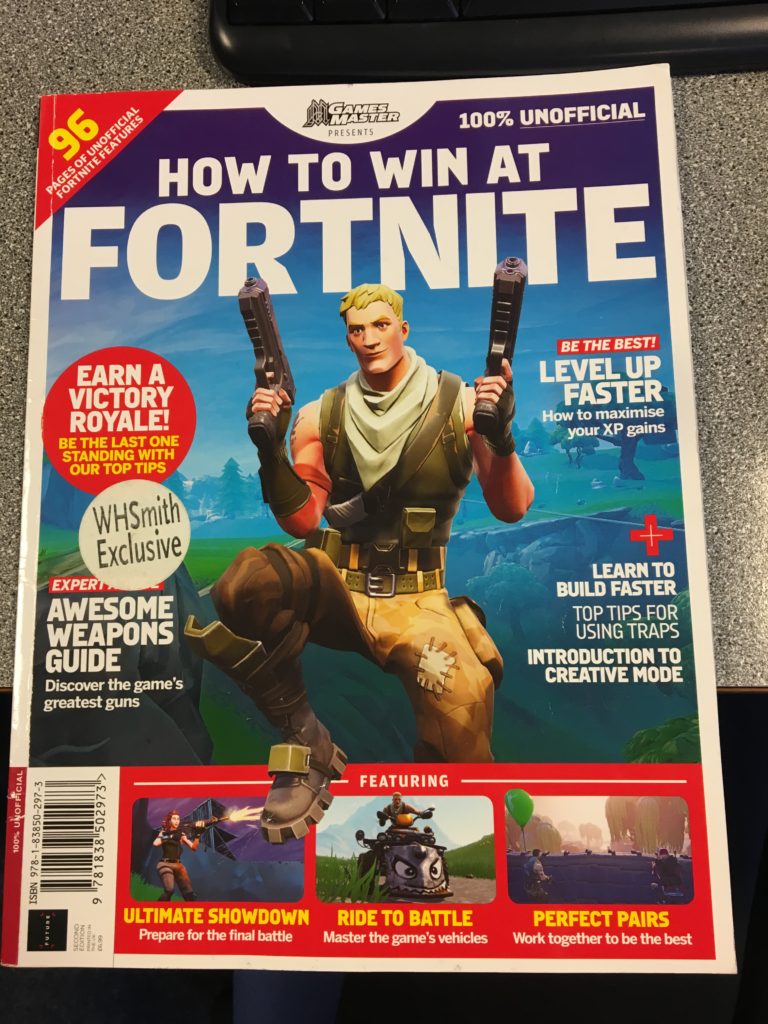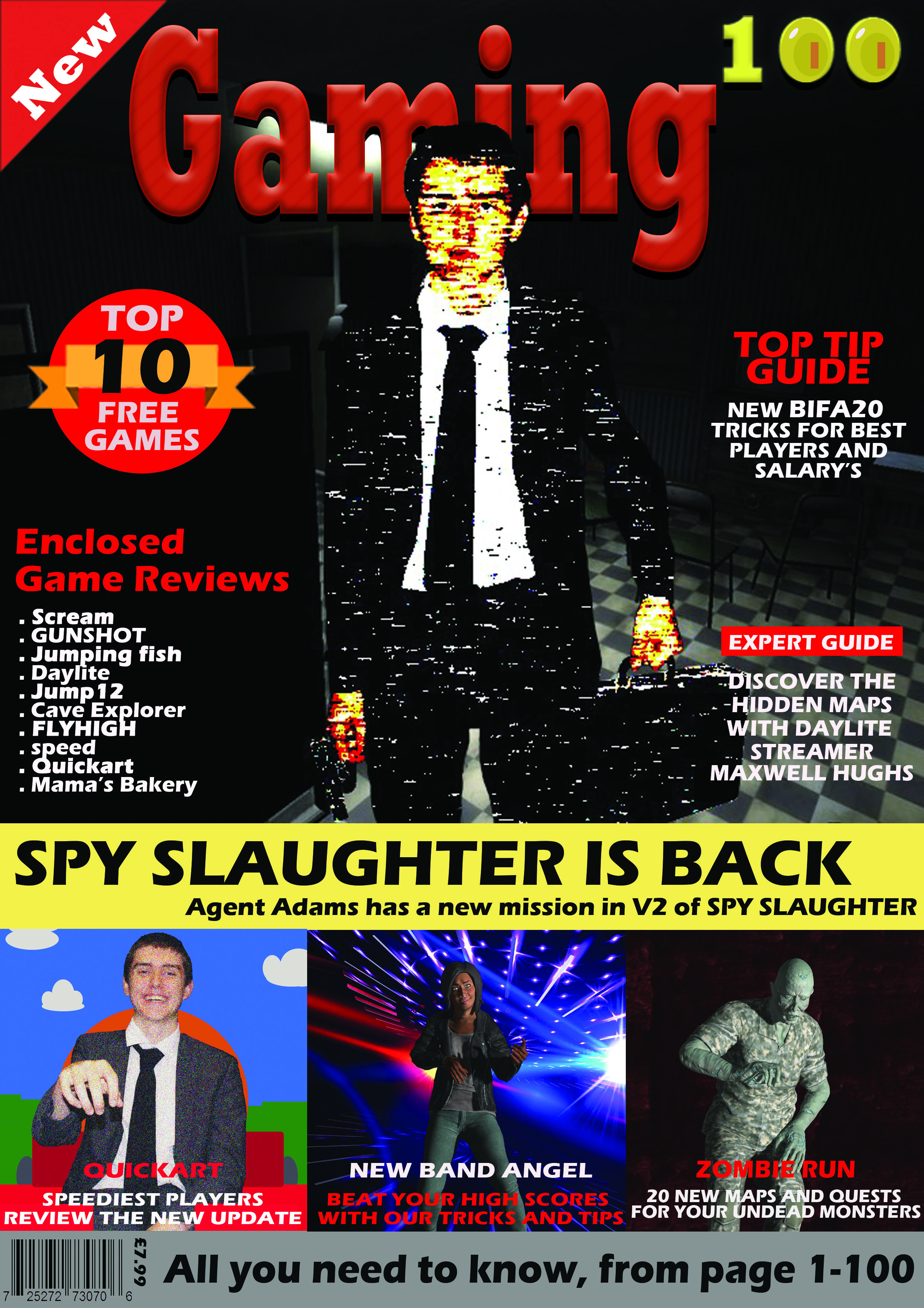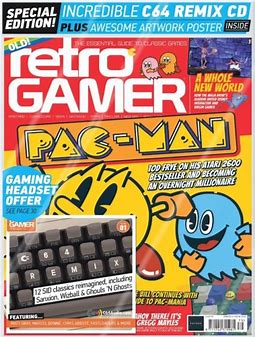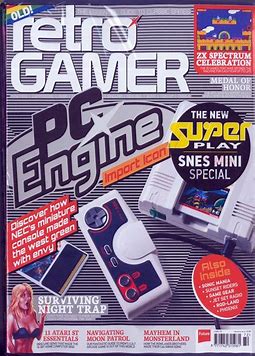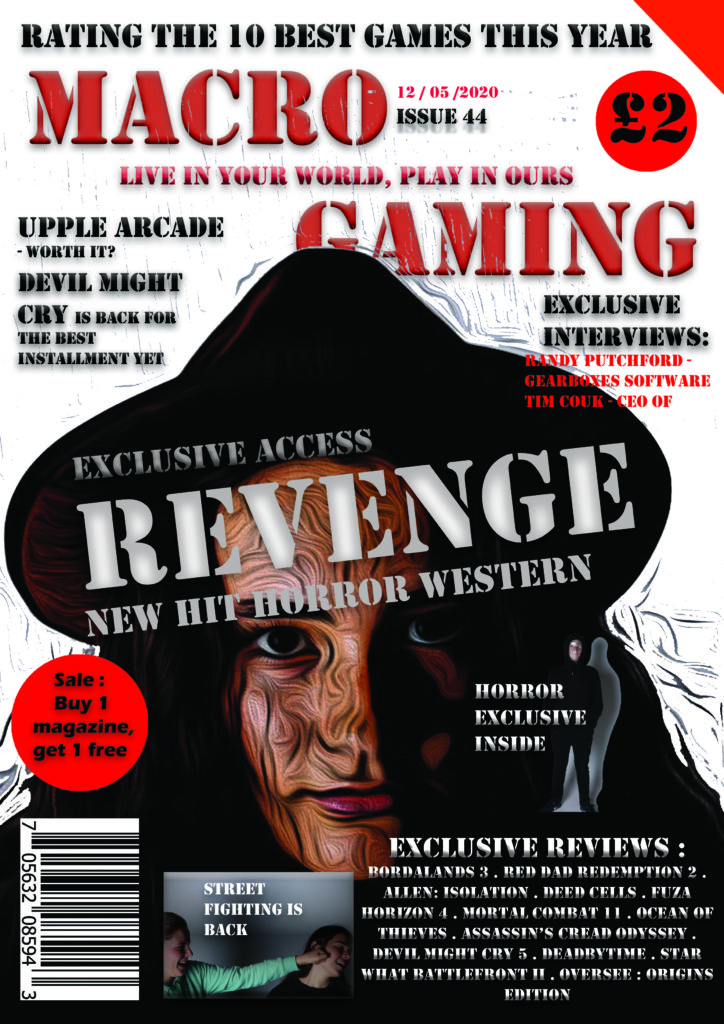My magazine is named ‘GAMEIN’ this is an attempt at a play on words as it is a gaming magazine which is about all the inside information and insights into the gaming industry, GAMEIN sounds similar to the word gaming. My intended target audience is male teenage gamers in the age range 13-17 who are based in the United Kingdom.
My style model for this magazine is the already existing magazine ‘PC GAMER’ and you will be able to see the conventions of it throughout my magazine. The main font used for text throughout the magazine will be Arial. My masthead will be in capital letters and in bold writing and a bold colour to ensure that it is eye-catching and stands out around other magazines.
There is a clear house style to my magazine, all the pages will be black with the masthead on the front cover being a lilac colour, this colour will be carried through the magazine and used for the copy and headlines. The colours red and yellow will be used for plugs throughout the magazine. I have used the colour black as the background / page colour for my magazine as black is associated with power, strength and rebellion, these connotations often relate to my intended target audience and will make them more attracted to the magazine. I have also used the colour red as it is intense and it connotes symbols of blood, danger and war which is what a lot of teenage boys in the age range 13-17 are interested in so it draws them into the magazine and makes them interested.
All images, logos and copy is original, and I will create my magazine on adobe Photoshop. To create images for my magazine I will use adobe fuse to create life like cartoon characters to make them look as though they are actual characters from video games. I will also create 8-bit art to create vintage style games characters and icons.
I will used Blumler and Katz uses and gratifications theory and will create my magazine to be informative and educational about the gaming world I also would like it to be entertaining. The main image is an iconic sign of a man in army style clothing. The code within the magazine will be through the use of colour. The codes will convey connotations of power, danger and violence. The magazine will be a reactionary text as it follows societies ideas of gaming and masculinity within it.
